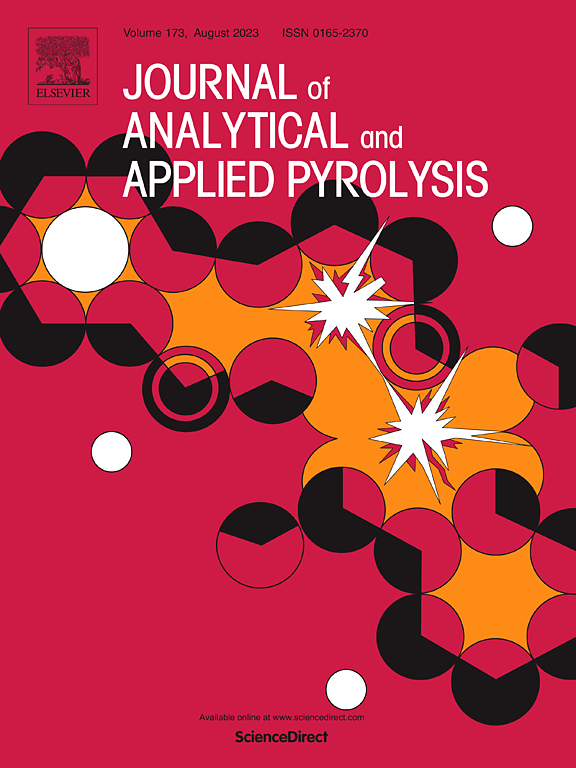Pyrolysis kinetics and mechanism of pore formation during the pyrolysis of biomass sawdust impregnated with phosphoric acid
IF 5.8
2区 化学
Q1 CHEMISTRY, ANALYTICAL
引用次数: 0
Abstract
The precise regulation of the pore structure in bio-based activated carbon derived from industrial waste remains a significant challenge, which has impeded the controlled synthesis of high-quality and cost-effective industrial carbon materials. To facilitate the effective resolution of this critical issue, this work studied the pyrolysis kinetics mechanism and pore formation mechanism during pyrolysis of phosphoric acid-impregnated industrial waste biomass sawdust (BP). Results showed that the thermal decomposition of BP proceeded in four stages as follows: stage 1 was the phase boundary chemical reaction mechanism, a power-law diffusion mechanism and a phase boundary chemical reaction mechanism for stage 2, the power-law diffusion mechanism and a three-dimensional diffusion mechanism for stage 3; the stochastic nucleation and growth mechanism for stage 4. The formation mechanisms of pores were: (a) the reactions between H3PO4 and its derived P2O5 with biomas sawdust; (b) the reaction between small molecule gases such as H2O, H2, and CO2 with the biomass sawdust. With increase of H3PO4 amount, H3PO4 and P2O5 mainly reacted with biomas sawdust. This process removed large amounts of oxygen and carbon of biomass, meanwhile formed lots of vacancies, accompanying generation of developed mesoporous structure (1.38 cm3/g). These findings provide valuable theoretical guidance for the production of high-quality industrial activated carbon with a tunable pore structure.
求助全文
约1分钟内获得全文
求助全文
来源期刊
CiteScore
9.10
自引率
11.70%
发文量
340
审稿时长
44 days
期刊介绍:
The Journal of Analytical and Applied Pyrolysis (JAAP) is devoted to the publication of papers dealing with innovative applications of pyrolysis processes, the characterization of products related to pyrolysis reactions, and investigations of reaction mechanism. To be considered by JAAP, a manuscript should present significant progress in these topics. The novelty must be satisfactorily argued in the cover letter. A manuscript with a cover letter to the editor not addressing the novelty is likely to be rejected without review.

 求助内容:
求助内容: 应助结果提醒方式:
应助结果提醒方式:


